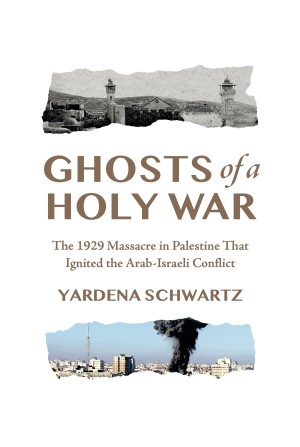Much like 9/11 is for Americans, 10/7 has become shorthand for Jews around the world — shorthand for the single deadliest day for Jews since the Shoah. How does one even start to chronicle a day that saw over 1,200 people slaughtered, 251 kidnapped, and thousands more injured? How does one organize a narrative that describes the unexpected terror attack from air, land, and sea?
Lee Yaron, a reporter for the newspaper Haaretz, has done just that in her new book, 10/7: 100 Human Stories. While not a comprehensive account, this sprawling work of investigative reporting offers snapshots of various communities attacked, braiding history and political analysis with the stories of victims and survivors. In the introduction, Yaron acknowledges the speed with which the book was published: “This book comes early, and in a way it’s a first line of defense — a defense against distortion, a defense against forgetting.” Yaron ends the introduction by writing, “Now all of Israel sits, if not in vigilance then in vigil. The end of shiva is not in sight, and none can yet foresee the moment or manner of our rising.” Indeed, reading this book while the war is still raging on is a bit disorienting.
On October 7, nearly sixty kibbutzim, moshavim, and cities in the Gaza Envelope were devastated by terror. Yaron points out that the “terrorists of Hamas murdered and destroyed the very communities that did more than any others to promote peace between the two people.” She breaks down the chapters by location: there is “Sderot,” “Trip to the Dead Sea,” “Ofakim,” “Rave,” “To Kibbutz Be’eri and Back,” and “Warning: A History of Gaza,” to name a few. Within each chapter, she provides some background information, situates it in larger political and social contexts, and immerses us in stories. And there are so many stories of that day.
At times the book can be confusing and overwhelming. But that may be precisely the point; the attacks brought chaos, and readers are getting the smallest taste of it. In the chapter “Victims of Grief,” Yaron shows the far-reaching impact of 10/7. She tells the story of Haim Ben Aryeh, a bus driver who transported child survivors of Be’eri to hotels that night, and who, weeks later, died by suicide; and the story of Tamar Torpiashvili, the nine-year-old who died of a heart attack during a warning siren at the end of October. In “Kathmandu to Kibbutz Alumim,” Yaron details the ordeal of Nepali agricultural students and workers. There are testimonies by survivors, interviews with the parents of slaughtered Nova partygoers, and text-message conversations from safe rooms.
There will be plenty of books to come about October 7, and 10/7 is an excellent start. It is not an easy read, but it shouldn’t be. Yaron writes starkly about the horrors perpetuated, giving us a shattering glimpse into that morning. While the book sometimes seems thrown together, the lack of polish feels apt. Yaron has written a book in which the rawness of that day is palpable on every page.
Jaime Herndon is a medical writer who also writes about parenting and pop culture in her spare time. Her writing can be seen on Kveller, Undark, Book Riot, and more. When she’s not working or homeschooling, she’s at work on an essay collection.




